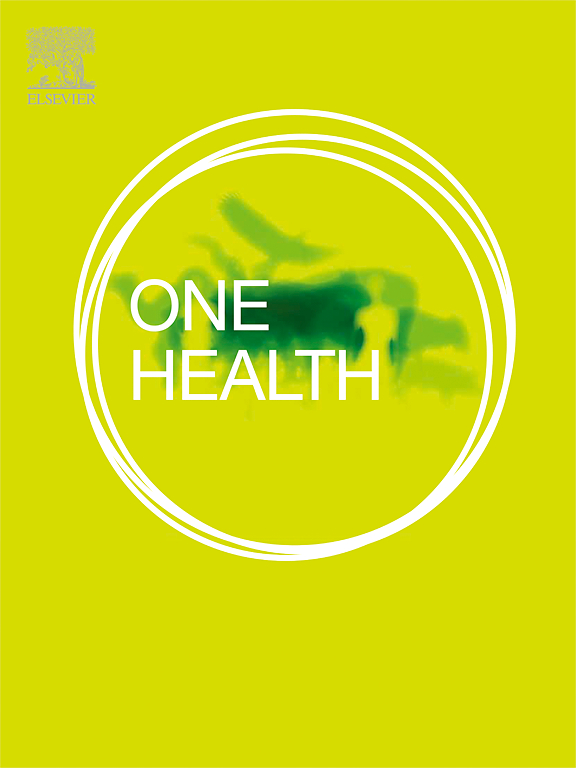土耳其梅尔辛地区蛭状肠虫病例的流行病学和分子特征:基于线粒体DNA cox1基因序列的分析
IF 4.1
2区 医学
Q1 INFECTIOUS DISEASES
引用次数: 0
摘要
蛭状肠虫是最常见的肠道蠕虫之一,尤其在儿童中。线粒体cox1基因分析显示三种基因型(A、B、C)。目的是评价在梅尔辛大学医院诊断的蠕虫病例的流行病学特征和cox1基因型。2017年1月至2023年12月,采用玻璃纸胶带法对1496份样本进行了检测,鉴定出75例阳性。回顾性分析流行病学资料。采用苯酚-氯仿法从30份阳性样本中分离DNA,对cox1基因巢式PCR产物进行测序。使用GenBank序列进行系统发育分析。在有胃肠道症状的患者样本中,蛭形绦虫的阳性率为5%(75/1496)。在阳性病例中,93.3%为儿童,平均年龄为8.7±7.7岁,其中5 ~ 10岁年龄组患病率最高(9%)。最常见的报告症状包括腹痛(49.3%)、肛周瘙痒(40%)和夜间流口水(33.3%)。分子分析显示,所有分离株均为B基因型,鉴定出8个单倍型。6个单倍型是新发现的,其中2个单倍型与先前在伊朗、伊拉克和希腊报道的序列相同。虽然我们区域的蠕虫流行率相对较低,但它仍然是一个重大的公共卫生问题,特别是在学龄儿童中。基因型B在欧洲和中东广泛报道,在我们的研究人群中占主导地位。此外,本研究的单倍型与周边国家的单倍型相同或密切相关。为了进行更全面的流行病学评估,需要在土耳其不同地区进行进一步的研究。本文章由计算机程序翻译,如有差异,请以英文原文为准。
Epidemiological and molecular characterization of Enterobius vermicularis cases in Mersin, Turkey: An analysis based on mitochondrial DNA cox1 gene sequences
Enterobius vermicularis is among the most common intestinal helminths, especially in children. Mitochondrial cox1 gene analyses revealed three genotypes (A, B, C). We aimed to evaluate the epidemiological characteristics and cox1 genotypes of E. vermicularis cases diagnosed at Mersin University Hospital. Between January 2017 and December 2023, 1496 samples were examined using the cellophane tape method, and 75 positives were identified. Epidemiological data were retrospectively analyzed. DNA was isolated from 30 positive samples via the phenol–chloroform method, and nested PCR products of the cox1 gene were sequenced. Phylogenetic analyses were performed using GenBank sequences. In a sample of patients with gastrointestinal signs, the positivity rate for E. vermicularis was 5 % (75/1496). Among the positive cases, 93.3 % were pediatric, with a mean age of 8.7 ± 7.7 years, and the highest prevalence (9 %) was observed in the 5–10 age group. The most commonly reported symptoms included abdominal pain (49.3 %), perianal itching (40 %), and nocturnal drooling (33.3 %). Molecular analysis revealed that all isolates belonged to genotype B, and eight haplotypes were identified. Six haplotypes were novel, while two haplotypes were identical to sequences previously reported from Iran, Iraq, and Greece. Although the prevalence of E. vermicularis in our region was relatively low, it remains a significant public health concern, especially among school-aged children. Genotype B, widely reported in Europe and the Middle East, was dominant in our study population. Moreover, haplotypes in this study were identical or closely related to those from neighboring countries. Further studies from different regions of Turkey are needed for a more comprehensive epidemiological assessment.
求助全文
通过发布文献求助,成功后即可免费获取论文全文。
去求助
来源期刊

One Health
Medicine-Infectious Diseases
CiteScore
8.10
自引率
4.00%
发文量
95
审稿时长
18 weeks
期刊介绍:
One Health - a Gold Open Access journal.
The mission of One Health is to provide a platform for rapid communication of high quality scientific knowledge on inter- and intra-species pathogen transmission, bringing together leading experts in virology, bacteriology, parasitology, mycology, vectors and vector-borne diseases, tropical health, veterinary sciences, pathology, immunology, food safety, mathematical modelling, epidemiology, public health research and emergency preparedness. As a Gold Open Access journal, a fee is payable on acceptance of the paper. Please see the Guide for Authors for more information.
Submissions to the following categories are welcome:
Virology,
Bacteriology,
Parasitology,
Mycology,
Vectors and vector-borne diseases,
Co-infections and co-morbidities,
Disease spatial surveillance,
Modelling,
Tropical Health,
Discovery,
Ecosystem Health,
Public Health.
 求助内容:
求助内容: 应助结果提醒方式:
应助结果提醒方式:


